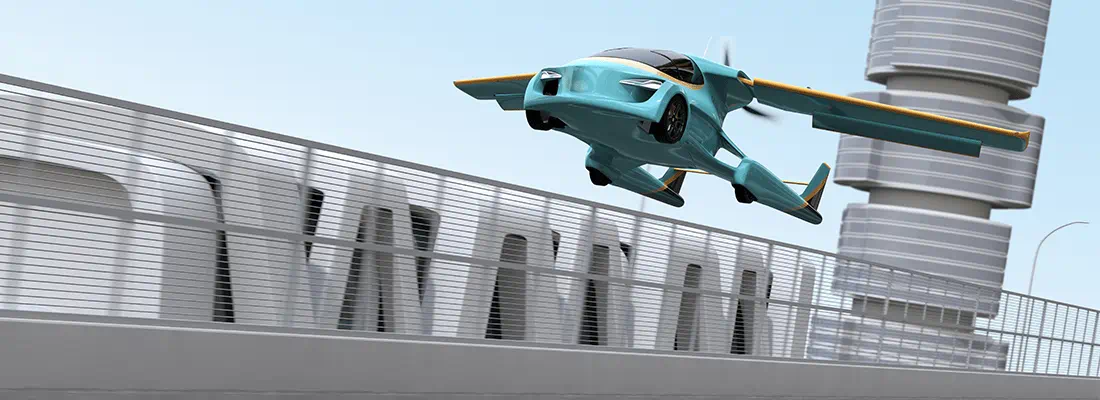According to Adina Iona Valean, European Commissioner for Transport, around EUR 760 million of investment in drone start-ups has been recorded in the first six months of 2020 alone, 20 times more than for the whole of 2016. “Drones appear to be more resilient to crises than commercial aviation”, she said during ADW Hybrid 2020. However, this disruptive growth also puts enormous pressure on the various Aviation Authorities around the globe. EASA (EU), FAA (USA) and CAAS (Singapore) all feel that pressure. Kevin Shum, Director General at CAAS said on Thursday: “We are moving too quick for regulators’ comfort, and too slow for the industry.” In an interview with Kevin Shum he points out the challenges CAAS is facing at the moment.
The UAM Industry is growing rapidly around the globe. In Europe new sets of rules and regulations will be implemented to boost international cooperation. Where does Singapore/Asia stand at the moment? How does CAAS stand in the discussion about the integration of ATM and UTM?
Singapore’s UAS regulatory framework continues to evolve rapidly. We have come far since 2015, when we first started putting in place rules and regulations for UAS. We update these rules continuously, taking into consideration our experience in managing UAS, and technology developments.
Today, our framework seeks to strike a balance between facilitating the use of UAS, for the many beneficial uses of UAS, and to manage the use of UAS, to mitigate the impact on aviation and public safety and security. Our approach has focused on a consultative, collaborative approach with all stakeholders, that emphasizes personal responsibility and accountability. Our rules have become more sophisticated over time, to ensure that they are fit-for-purpose. As UAS increase in capability and across a broader range of uses, there is no one-size fits all solution. For example, our regulatory framework started with differentiating commercial versus non-commercial use of UAS to now include requiring UAS flyers of certain categories to obtain Unmanned Aircraft Pilot License.
Ultimately, to maximise the use of airspace, we will need UAS to operate in the same airspace as manned aircraft. This means that ATM and UTM must eventually be fully integrated. However, the available technology and CONOPS are far from being able to enable this safely and effectively for now. Hence, in the immediate term, our emphasis will be on UAS operations in segregated airspace, although we will always be keeping an eye on the ultimate goal.
Our current priority is to develop a UTM concept of operations to support complex operations in dense urban areas - given Singapore’s urban environment. These requirements would be akin to level U3 of the U-space concept. Our intention is to adopt a step-by-step, phased approach to gradually rachet up to full integration.
What are the latest developments regarding a UAM ecosystem in Asia-Pacific?
There is rapid progress from the UAM industry worldwide. Governments are also driving UAM development through active engagement with industry.
One area which we are particularly excited about are eVTOLs, or air taxis. In Asia Pacific, eVTOL trials are on-going, with the focus on development of prototypes, certification systems, navigation technologies and infrastructure requirements. In Singapore, we envisage the use of eVTOL starting first with flights over waters and expand across borders to connect with immediate regions, enhancing the flow of people and goods to improve efficiency.
Patrick Ky, Executive Director of EASA will present the latest developments on U-space in Europe. How far is Singapore/Asia on this matter?
Singapore’s urban environment and congested airspace would pose requirements similar to that identified in U-space’s U3 requirements. The UTM concept of operations will be developed in phases with the eventual goal to build a UTM system with capability to safely enable operations here. These could include providing a comprehensive real time situational air picture, optimize airspace utilization, conduct deconfliction as well as to be able to handle contingency events.
What do you think of a global approach?
A global approach would be advantageous. Harmonization would facilitate the use of UAMs, and support the development of the industry, which would then no longer have to contend with a patchwork of different rules.
However, we have to be realistic that a global approach takes time to develop, to achieve consensus. Given the rapid progress in the UAM industry, regulators do not have this luxury of time.
Therefore, CAAS’ objective is to work with leading like-minded regulators to co-develop a set of common rules, and standards, to guide the development of our UAM sectors, which can also form the nucleus of a set of global rules and standards. This is however, not to say that we should expect uniformity across all jurisdictions. Even when regulators achieve consensus on the global rules and standards, there must still be space for regulators to adapt these rules to their particular operating environments and risk appetite.
What do you hope to achieve during ADW Hybrid 2020?
There is scope to work together on the harmonization of rules and sharing of best practices to co-create safety rules and technical standards for these new aircraft types and operations. The development of enabling UAM technologies may also have spin-offs – eVTOLs could offer a potential pathway for the electrification of the aerospace industry. I look forward to working together with various UAM stakeholders, and continued collaboration with CAAs and the industry to enable UAM to take off.





